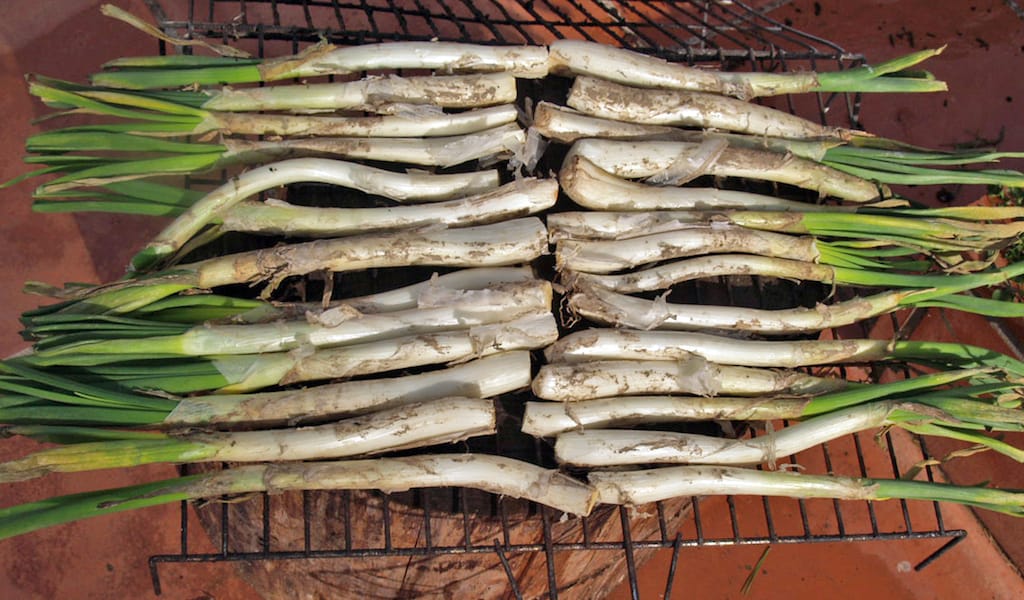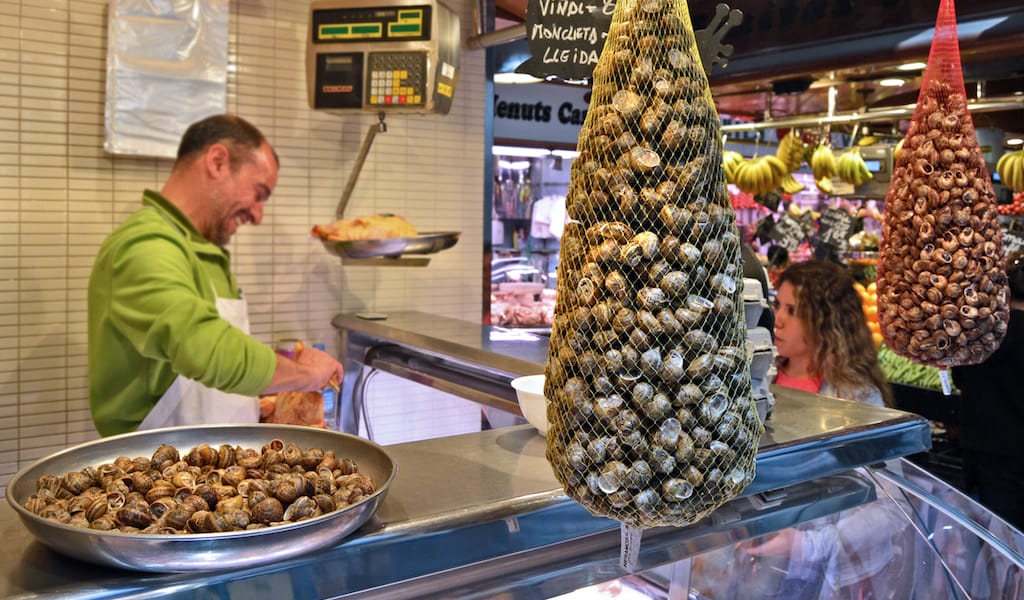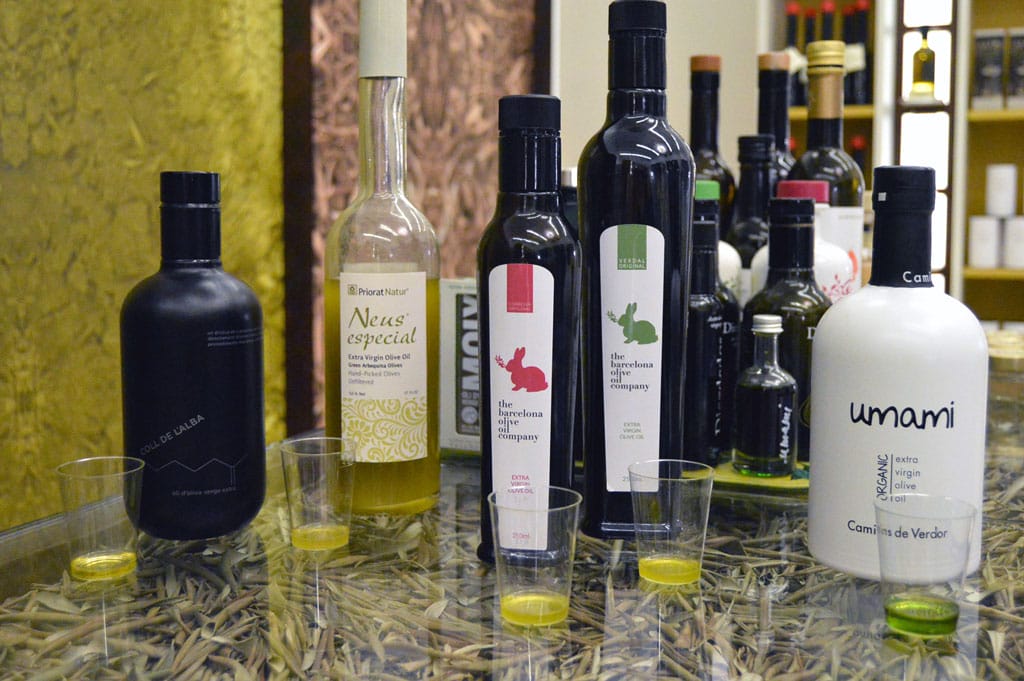The trick to cooking calçots, a special Catalan spring onion, is simple: a good charcoal grill. The heat from the glowing embers is crucial to creating the perfectly scorched exterior (the black outer skin is then peeled away, leaving the tender and juicy inner bulb). Fire and smoke – along with exceptionally fresh green onions – are really the only ingredients here.
The popular ritual of the calçotada, in which families and friends gather together with the sole purpose of eating calçots, traditionally takes place between the months of November and April, the peak season of this special green onion. For particularly large celebrations, groups crowd around an open barbecue, with sarmientos, or vine shoots, creating the perfect flame to blister the onions just so. The white inside of the calçot, which is more delicate than the traditional green onion, is then dipped in salsa romesco, a special sauce made from dried red peppers, nuts (usually hazelnuts and almonds), garlic, vinegar and olive oil.
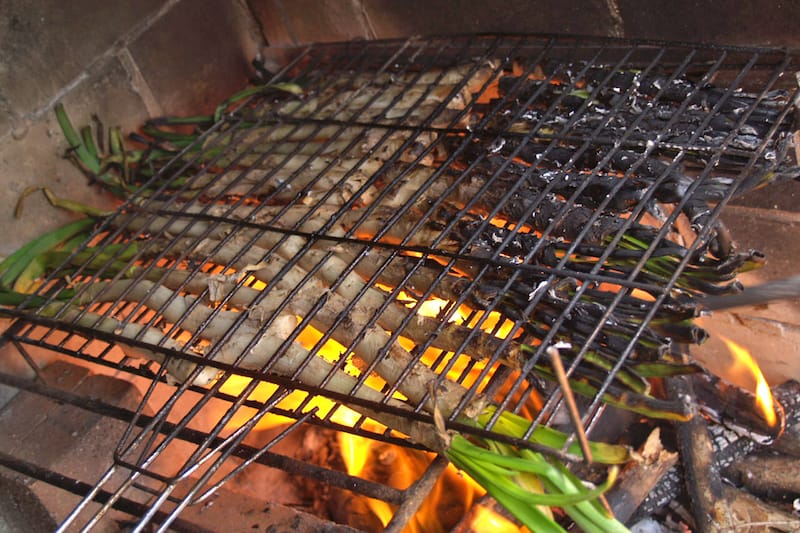
If in the countryside people normally gather at masías (farmhouses) for calçotadas, in the city most spots offering calçots are braserías (“brasa” meaning embers) or traditional Catalan restaurants equipped with – what else – a good charcoal grill. These places also often specialize in other grilled specialties, particularly meat dishes, which are abundant in traditional Catalan cuisine. Here are some of our favorite spots in Barcelona to partake in this yearly ritual.
Restaurante Carmen
Located in Sants, a lesser-explored neighborhood outside of the city’s historic center, this restaurant is quickly becoming one of the best spots in Barcelona for calçots. The family atmosphere makes it a suitable spot for a calçotada, and their calçots, which are served in curved terracotta roof tiles, are accompanied by an excellent romesco sauce for dipping. The rest of the menu, which includes grilled vegetables, grilled seafood and meat a la piedra (served on a hot stone), features their signature homey cuisine.
El Disbarat
For an organic experience, head to El Disbarat in Gràcia – their special calçotada menu features organically grown calçots. Originally a bodega, the space was transformed into a neo-traditional Catalan tavern, complete with a rustic décor. The old wine barrels and wooden furniture are particularly charming and add to the spot’s warm atmosphere.
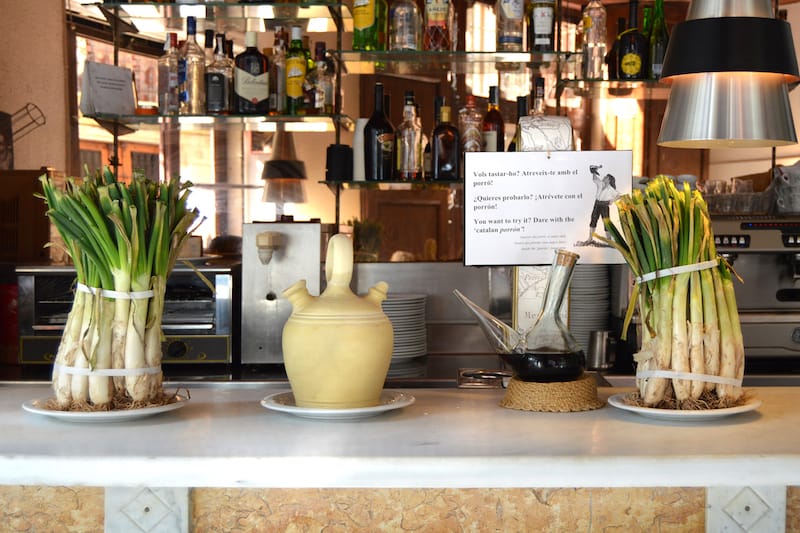
L’Antic Forn
Due to its proximity to Las Ramblas, this neighborhood restaurant in Raval is a popular spot for tourists looking to try calçots. Yet L’Antic Forn has managed to stay true to its essence, which keeps locals coming back regularly to enjoy their daily specials. Like many other braserías in the city, it originally began life as a bakery and only later was transformed into a grill joint. During winter, their calçotada menu, priced at €35, includes delicious calçots and either grilled sausage, entrecote or salmon as a second course.
Can Travi Nou and Can Cortada
These two urban masías, which exude traditional charm and offer more refined menus, get top marks for their calçots experience. Housed in a splendid 17th-century farmhouse with a spectacular flower-covered façade as well as a charming outdoor dining area, Can Travi Nou offers classic Catalan fare with a twist. They have two high-quality calçotada menus to choose from – one (€50) includes starters and the other (€40) doesn’t.
Even though Can Cortada has grander origins – the restaurant is housed in a restored castle surrounded by beautiful gardens – the calçotada menu here is a bit more affordable than at Can Travi Nou. The restaurant is divided into different spacious lounges and private dining rooms, perfect for large groups, and serves fine Mediterranean cuisine and top-quality meats year round.
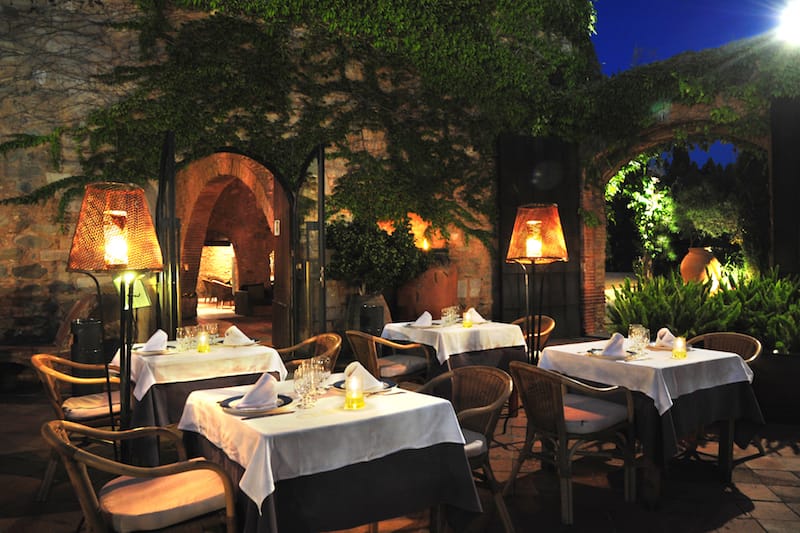
Casa Pamplinas
Situated in Barcelona’s Left Eixample neighborhood, Casa Pamplinas is a cousin (if not a brother) of two other well-known braserías in the center: Maur Urgell and Maur Muntaner. All three pay tribute to old farmhouses with their lovely rustic décor.
In any case, Casa Pamplinas sets itself apart by focusing more on Catalan cuisine. In addition to the calçots they offer during the winter season, which are properly served in roof tiles, they also have grilled meats, vegetables and fish like sardines (when in season), plus long skewers of grilled meat and vegetables called sables (“swords”). All are cooked on their top-of-the-range Josper grill (a grill and oven in one). Grab a seat in the covered inner patio, which gives off the countryside vibe you want when eating calçots.
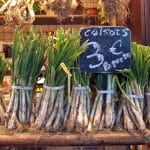 February 1, 2013 Calçots: Not Your Average Onion
February 1, 2013 Calçots: Not Your Average Onion
As the legend goes, a 19th-century Catalan farmer was out experimenting in his fields […] Posted in Barcelona May 12, 2021 Building Blocks
May 12, 2021 Building Blocks
For thousands of years, snails have been an easy source of protein, particularly during […] Posted in Barcelona October 19, 2020 Building Blocks
October 19, 2020 Building Blocks
Spain, Italy, Greece, Turkey, Portugal, Morocco, Tunisia – one thing that unites this […] Posted in Barcelona
Published on March 08, 2019
Related stories
February 1, 2013
BarcelonaAs the legend goes, a 19th-century Catalan farmer was out experimenting in his fields when he came up with a new kind of longer, juicier green onion, the calçot. In creating the onion, the farmer produced much more than a new vegetable; he also paved the way for the rise of an idiosyncratic, and distinctly…
May 12, 2021
BarcelonaFor thousands of years, snails have been an easy source of protein, particularly during lean times. But for the Romans, these slimy mollusks were more than just a back up – a meal of snails was considered an exquisite feast. The Romans were experts on the subject. They studied and classified snails; they knew where…
October 19, 2020
BarcelonaSpain, Italy, Greece, Turkey, Portugal, Morocco, Tunisia – one thing that unites this swathe of the Mediterranean is olive oil, whose use in the Fertile Crescent can be traced back to 6000 B.C.E. Olives arrived in the southern part of the Iberian Peninsula around 9th century B.C.E. with the Phoenicians. Ancient Rome saw huge quantities…







































